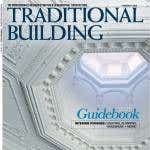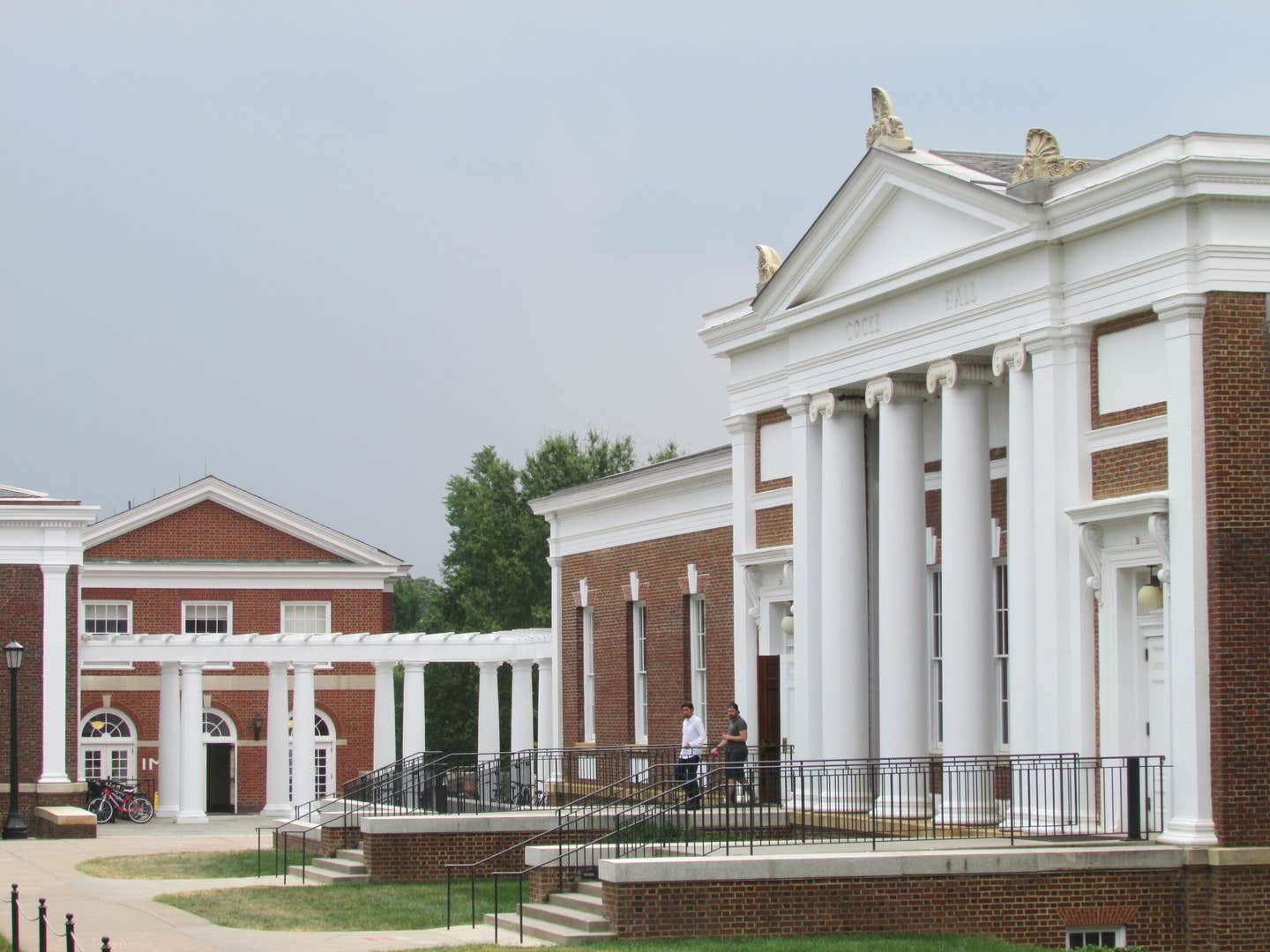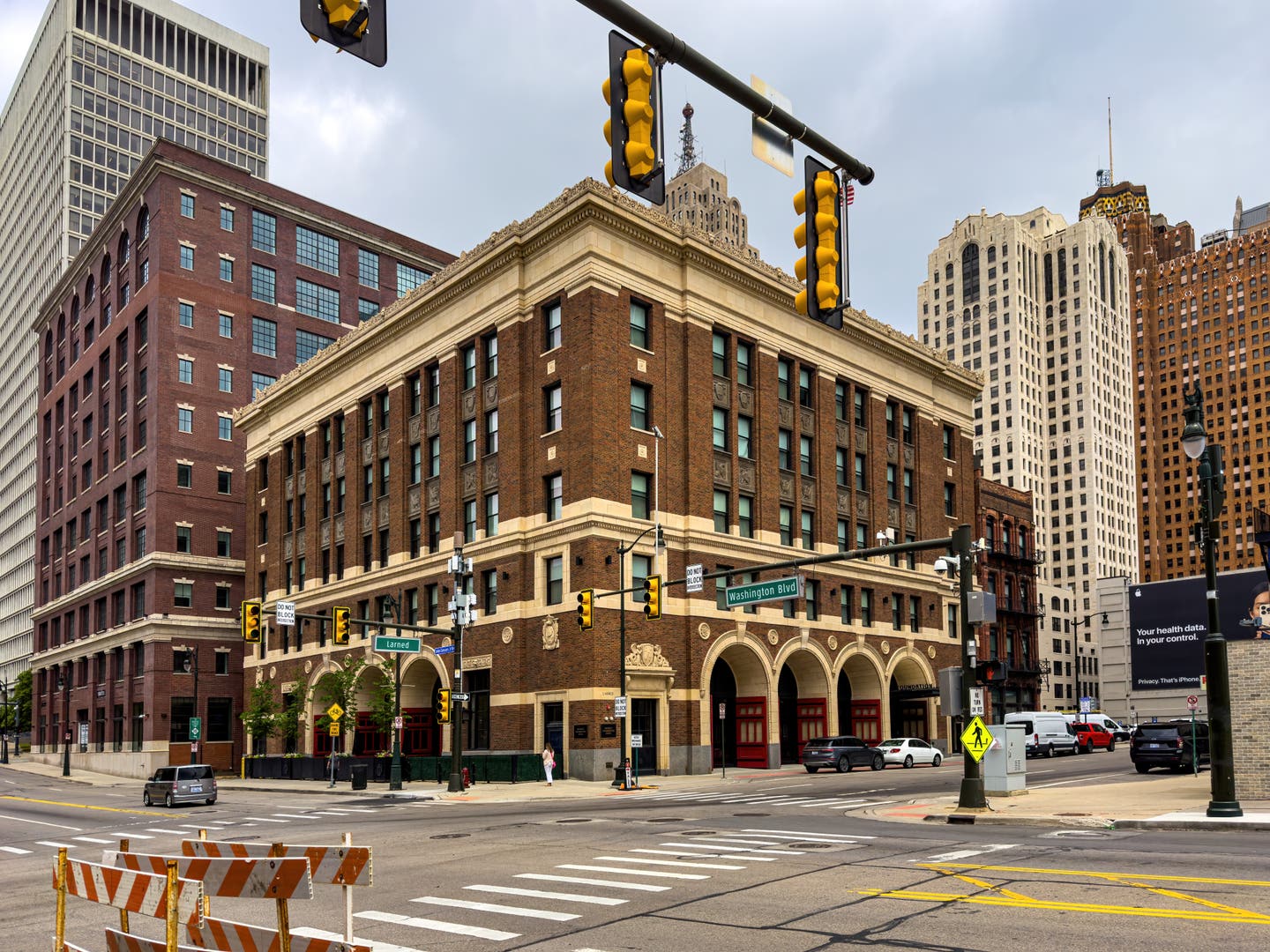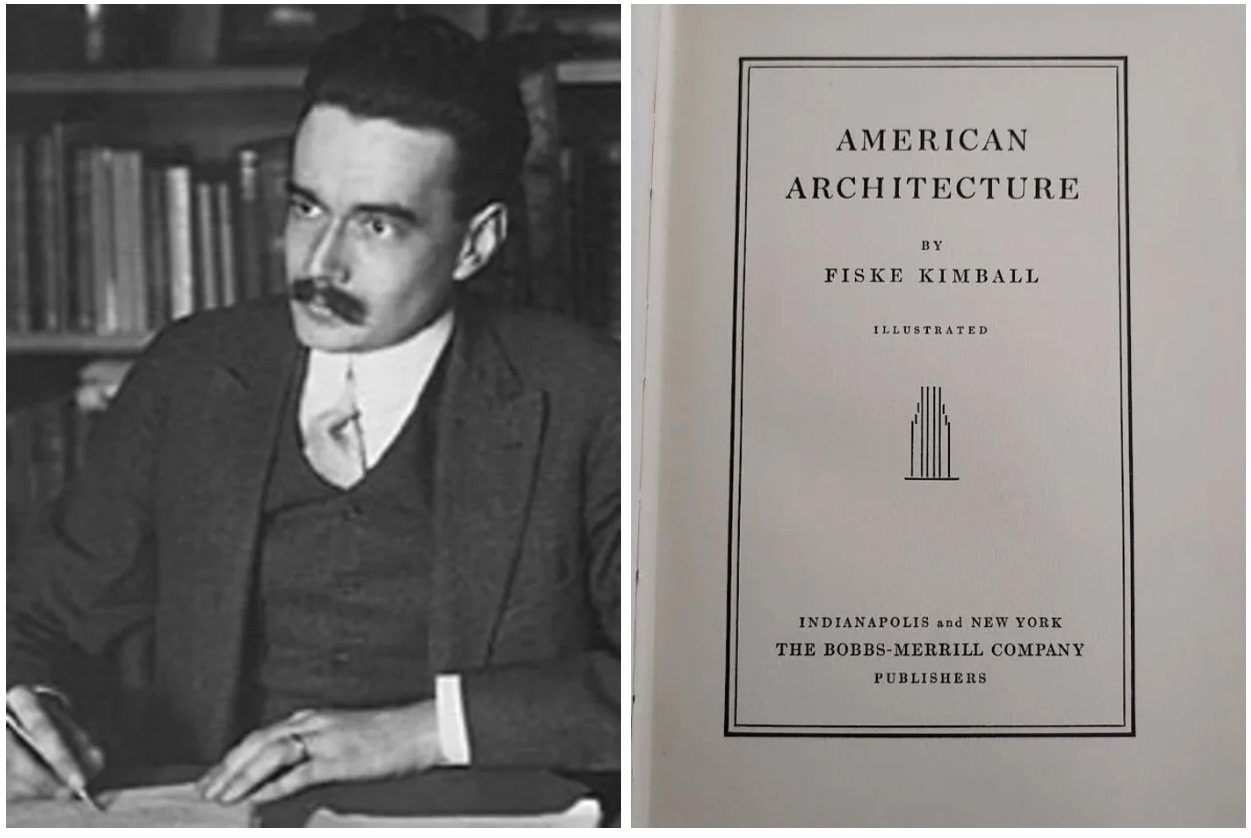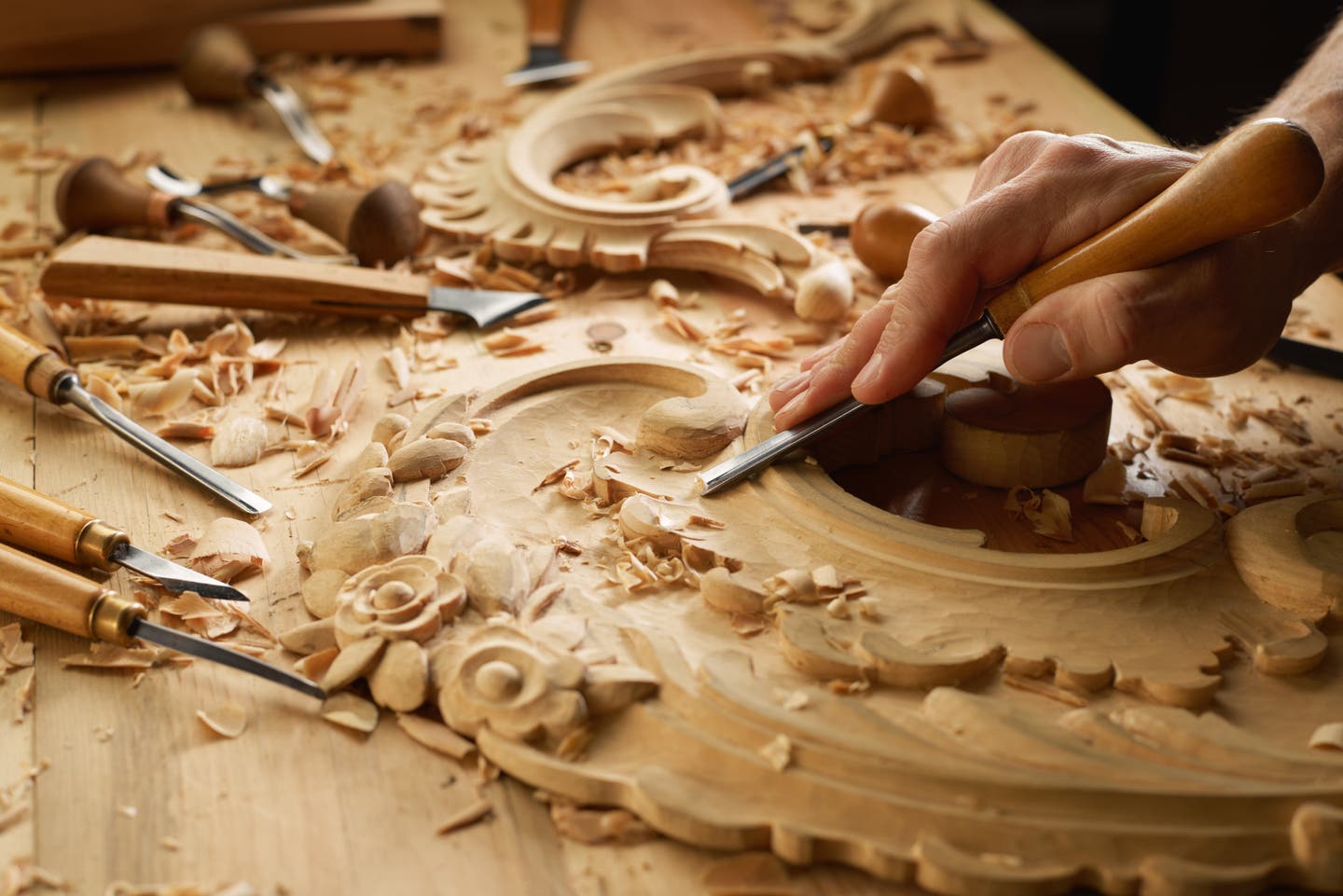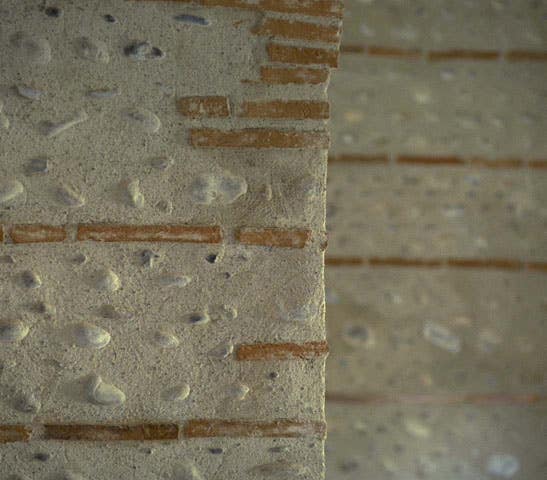
Patrick Webb
The Role of Aggregates and Fibers in Plaster
“To see a world in a grain of sand and…hold infinity in the palm of your hand.” – William Blake
While it’s true that most aggregates and fibers are less costly than our precious binders, they’re not simply cheap fill material. Rather, they play a very active role in the strength and performance of the coating as well as the aesthetic quality of the finish. We’ll approach the subject here by considering various physical properties of aggregates and fibers.
Sharpness
It seems intuitive that if your aggregate is sharp and jagged that it will be easier for the binder to find a “key,” that is to say a means to physically attach. Clays and limes shrink as they dry, threatening to crack or otherwise weaken the plaster. Crushed sand and glass are examples of very sharp aggregates that can help overcome this weakening effect, permitting the application of thicker base coats.
Sharper is not always necessarily better. A disadvantage of sharp aggregates is that they make it challenging to achieve a smooth finish. Often plasterers will switch to a more rounded aggregate such as a river or rinsed sea sand for that final coat. Finish applications are applied relatively thin to minimize shrinkage and the rounded nature of the aggregates allows the plaster to be easily brought to a smooth finish with the trowel. Whether an aggregate is sharp or more rounded can be quickly and simply determined by rubbing it between the fingers.
Granulometry
Another approach to counteract the potential effects of shrinkage is to pay close attention to granulometry, the distribution of aggregates of various sizes within a plaster. Particularly for the thicker base coats it is important to have a small percentage of larger aggregates, a majority of medium size ones and a small portion of fines in the mix. This allows the aggregates to interlock most efficiently with the smallest quantity of binder required to fill the voids. For the thinner coats of finish work a smaller distribution of finer aggregates permits the plasterer to create a smooth, closed surface. Usually a visual inspection in the hand will furnish a good indication if you have a sufficient distribution of aggregate sizes.
Hardness
By hardness we’re actually referring to the more interesting quality of softness. Gypsums and certain natural cement binders have the unique and interesting characteristic of being “self-binding,” that is to say they don’t actually depend on aggregates to perform well as a plaster. That opens up a great deal of aesthetic freedom regarding what aggregates can be added to them. Often, softer aggregates such as chalk, porous limestones or crushed gypsum rocks are utilized. It only takes a short while before the binder becomes harder than the aggregates allowing the surface to be cut, sanded or otherwise honed to a smooth surface for a striking resemblance to actual limestone.
Porosity
Silica sand, crushed marble and glass are relatively impervious; however, I personally love the benefits of porous traditional aggregates such as crushed limestone, terracotta and pumice, especially when making lime plasters. I find such plasters more ductile, comparatively smoother to apply. The porous aggregates soak up water like a sponge. They can be particularly helpful for the “grounds” or base coats of fresco work. As water evaporates from the binder it gradually and evenly is replenished from the porous aggregates maintaining the surface at the perfect level of humidity for buon fresco painting, extending the working time significantly.
Density
Being mineral based, most aggregates range from medium to relative high density. However, there are a few exceptional minerals that produce lightweight aggregates. Among these are Perlite and Vermiculite. These minerals have water trapped in their crystalline structure. When heated sufficiently they “exfoliate” or expand dramatically, something akin to a mineral popcorn! The resulting aggregates are correspondingly lightweight, have greater fire resistance and significantly increase the thermal and sound insulation value of plasters made with them.
Hydraulicity
Certain aggregates create a “hydraulic” or accelerated setting action in lime plasters. We’ll make this family of aggregates, known as “pozzolans,” the focus of its own future essay.
Flexibility
In addition to aggregates, fibers can be a very useful addition to plaster binders. Straw and manure have been used for millennia to help reduce erosion in exterior clay-based earthen plasters. Horse, goat and other animal hairs increase the tensile or flexural strength of gypsum and lime plasters, particularly useful for plasters applied over lath thus subjected to greater shear forces than they would experience over masonry. Japanese plasterers have a tradition of adding a particular species of dried seaweed to produce a similar benefit. Burlap woven from hemp, jute, sisal or coconut fibers can be embedded into walls in large webs and are very effective in reinforcing as well as attaching traditional plaster moldings and ornament.
Hopefully this sheds a little light on the importance of aggregates, part of an overall effort to demystify the medium of plaster. In our next essay, we’ll commence our in-depth review of traditional plaster binders with clay, expanding upon its chemistry, manufacture, properties and possible specifications.
My name is Patrick Webb, I’m a heritage and ornamental plasterer, an educator and an advocate for the specification of natural, historically utilized plasters: clay, lime, gypsum, hydraulic lime in contemporary architectural specification.
I was raised by a father in an Arts & Crafts tradition. Patrick Sr. learned the “decorative” arts of painting, plastering and wall covering as a young man in England. Raising me equated to teaching through working. All of life’s important lessons were considered ones that could be learned from the mediums of tradition and craft. I found myself most drawn to plastering as I considered it the richest of the three aforementioned trades for artistic expression.
This strong paternal influence was tempered by my grandmother, Geraldine Webb, a cultured, traveled, well-educated woman, fluent in several languages. She made a point of instructing her young grandson in Spanish, French, formal etiquette and opened up an entire worldview of history and culture.
After three years attending the University of Texas’ civil engineering program with a focus on mineral compositions, I departed, taking a vow of poverty, living as a religious aesthetic for a period of seven years. This time was devoted to clear reasoning, linguistic studies, examination of world religions, exploration of ethics and aesthetics. It acted as a circuitous path leading back to traditional craft, now imbued with a deeper understanding of interconnection in time and place. I ceased to see craft as simply work or labor for daily bread but among the sacred outward expressions of the divine anifest
within us.
From that time going forward there have been numerous interesting experiences. Among them study of plastering traditions under true masters here in the US as well as in England, Germany, France, Italy and Morocco. Projects have included such high expressions of plasterwork as mouldings, ornament, buon fresco, stuc pierre, sgraffito and tadelakt.
I’ve been privileged to teach for the American College of the Building Arts in Charleston, SC, where I currently reside and for the Institute of Classical Architecture & Art across the US. “Sharing is caring” – such a corny cliché but so true. I hardly know a
thing that hasn’t been practically served to me on a platter. I’m grateful first of all, but now that I might actually know a few things, it becomes my responsibility to be generous as well.


